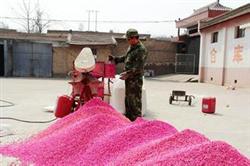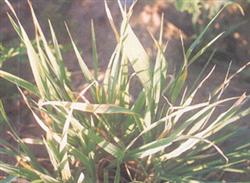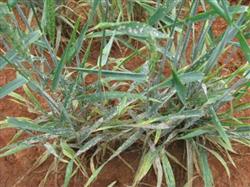Opinions on wheat sowing and prevention and control of diseases, insect pests and weeds at seedling stage

Winter wheat is one of the food crops with the largest sown area in our region. to do a good job in the prevention and control of diseases, insect pests and weeds before sowing is the key to ensure a strong seedling, a good harvest of summer grain and ensure the safety of grain production in our region. In recent years, with abnormal climate change and an increase in extreme weather, the occurrence frequency of wheat diseases and insect pests has also increased, among which some diseases, pests and weeds occur at the wheat sowing and seedling stage, and the sowing and seedling stage is the best period for the prevention and control of these diseases and insect pests. I hope that the competent departments of villages and towns and the vast number of association members will actively publicize farmers and conscientiously do a good job in prevention and control work to ensure the safety of wheat production at the seedling stage. The main pests that need to be controlled during sowing and seedling stage: Golden needle worm, grub, mole cricket; diseases include sheath blight, glume blight, leaf blight, root rot, total erosion, fishy smut, loose smut; weeds are brome, alkali grass, see wheat and other weeds. 1. The mixed plots of wheat glume blight, leaf blight, fishy smut, smut and underground pests can be soaked with 50% carbendazim mixed powder (carbendazim: 1:1) for 48 hours or 50% carbendazim wettable powder, 70% methyl thiophanate wettable powder, 40% mixed seed double + 50% phoxim EC 100ml 100kg, dry and sow seeds. 2. Wheat total erosive disease and underground pests mixed with mild disease fields with total erosion net 20ml and 0.5kg 0.75kg of water and 10kg of mixed wheat seeds. The seriously diseased field was mixed with 20ml mixed wheat seed 6.5ml 7.5 kg + 48% Lesbon EC according to 0.3% of the seed weight, piled up for 6 hours for 12 hours, dried and sowed, so that the agent fully adhered to the seed surface and killed the germs on the seed surface. 3. In the fields with mixed occurrence of wheat sheath blight, root rot and underground pests, 50% methyl thiophanate or 50% carbendazim 200% phoxim 100ml can be used to sow seeds in the sun. 4. Prevention and control measures of Gramineae, such as brome, alkali grass, sorghum, etc. Late October to early November is the best time to control Gramineae weeds. 4.1 Control of brome: 30 ml of 3% Shima or Kuoshima 20 ml per mu, 30 kg spray with water. 4.2 Control of alkali fescue: 50% grass per mu. Ethyl EC 80-100ml mixed with 50% water was sprayed in the whole field after the emergence of wheat seedlings. 4.3 Control of Triticum aestivum: after wheat emergence, the weeds were sprayed with 50% isoproturon, 125-250g / mu and 50 mu of water before tillering. Note: ① should not be used when the minimum temperature is lower than 4 ℃; rainfall does not affect the efficacy of ② 4 hours after application, but it should not be flooded 2 days before and after medication.
- Prev

Wheat thicket dwarf disease
Wheat rosette dwarf disease is a viral disease transmitted by the virus vector gray planthopper. There are two peaks in the transmission and infection of gray planthopper on wheat: the first peak is after the emergence of wheat seedlings, and the second peak is after the wheat turns green.
- Next

Harm and control measures of wheat powdery mildew
The disease can damage the aboveground organs of wheat plants, but mainly leaves and leaf sheaths, and glumes and awn can also be damaged when the disease is serious. At the beginning of the disease, the white mildew spot of 1~2mm appeared on the leaf surface, and then gradually expanded into nearly round to oval white mildew spot, and there was a layer of white powder on the surface of the mildew spot, which scattered immediately in case of external force or vibration. This is...
Related
- The first cup of black tea in spring, the flavor and history of tea gardens in Kenya, Africa
- The computer can not only choose potatoes, but also grow tea rice. AI will grow winter oolong tea champion.
- It is not only the inflated tea bitten by insects, but also engraved with the four seasons tea in Beipu.
- The Oriental Beauty Tea Festival in Zhuxian County takes the stage at the weekend to experience the plus-size feast of oil tea.
- & quot; Oriental Beauty Tea & Exploration of Emei in Hsinchu, the hometown of quot;
- The new variety of strawberry "Tainong 1" dessert is the first choice with mellow aroma. Crimson gorgeous
- History of Tea in Taiwan: from Wild Inner Mountain to Export Tea Garden
- Two types of Taiwan Oriental Beauty Black Tea won the British three-Star Award for Childhood Tea Xiang Zhang Jiaqi changed from pilot to champion tea maker.
- Banana species and varieties: the planting history of Taiwan Xianren banana and dwarf banana is long, is banana disease resistant?
- Coffee planting Technology: Qianjie Coffee from Seedling to harvesting

